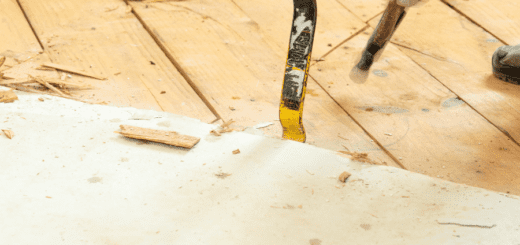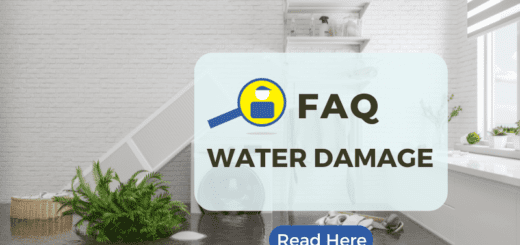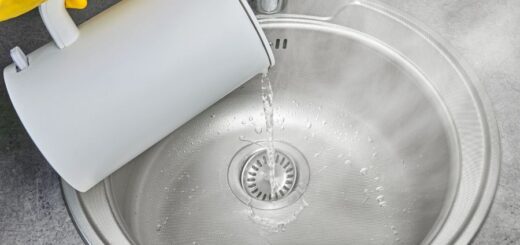Why Did My Washing Machine Flood?
As washing machines age, various components like hoses, pumps, and valves may deteriorate, leading to potential malfunctions and overflows. In such situations, swift action is crucial: first, turn off the power to prevent any electrical hazards. Next, clear the flooded area of any items to ensure safety and reduce damage. Take steps to eliminate the excess water promptly to prevent further saturationSaturation is the point at which a material or environment c... More of floors or walls.
If the water has seeped into hidden spaces, such as behind walls or under flooring, it’s advisable to contact a specialized restorationRestoration is the process of returning a property to its pr... More company to assess and mitigateTo mitigate is to reduce or limit the severity of damage, ri... More any potential water damage. Following this, address the washing machine issue promptly by inspecting hoses, checking for clogs, and identifying the root cause of the overflow to prevent future incidents.
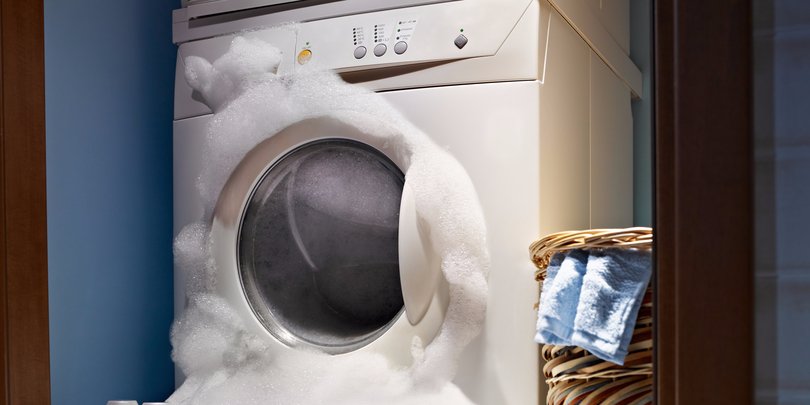
Why did your washing machine overflow?
There are many reasons washing machines overflow. Here are some of the most common causes:
- Drain that is clogged or blocked: Usually, this happens when you have a blocked drainpipe. The cause be debris, lint, or other materials that get stuck in the drainpipe and cause it to restrict the water flow.
- Broken water inlet valve: As the inlet valve controls the flow of the water into the washing machine, it is important that it functions properly. However, if the valve is opened or stuck, you can end up with a lot of extra water flowing into the machine which can cause overflow and even floodingFlooding is the overflow or accumulation of water in areas t... More.
- Worn-out hoses: Hoses that connect the washing machine to the water source can get fractured or become loose over time. If this happens you can end up with a flood if the water leaks during the filling or draining.
- Machine that is overloaded: If you overload the machine with laundry, it can cause it to shake or vibrate excessively. This can loosen hoses and other connections and create floodingFlooding is the overflow or accumulation of water in areas t... More.
- Water sensor that has malfunctioned: Sometimes the water level sensor or the pressure switch in the machine that controls the amount of water needed for each cycle malfunctions. If the water sensor does not detect the amount of water that is in the machine, it can cause overflow and floodingFlooding is the overflow or accumulation of water in areas t... More.
- Drain pump that has failed: The drain pump is very important as it moves the water from the washing machine during the drain cycle. If the pump is damaged or malfunctions, it can prevent the drain pump from draining, creating a water backup and even floodingFlooding is the overflow or accumulation of water in areas t... More.
- Washing machine that was installed incorrectly: Incorrect washing machine installation, including improper placement of drain hoses or failure to secure connections tightly, can result in water leaks and subsequent floodingFlooding is the overflow or accumulation of water in areas t... More.
- Broken seals: If you have a front-loading machine, make sure to check for any leakage near the seals so you can avoid water damage in your home.
How to Fix a Washing Machine Overflow
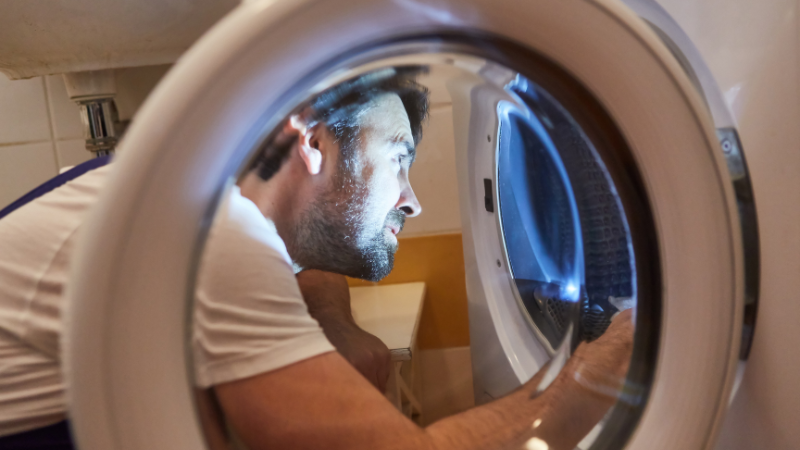
Depending on how severe the damage is to your washing machine, it may take a few steps to fix it. Here is how to do it:
- Inspect and assess the damage: Look at the affected area to assess the damage. It is important to see if there is any moldMold is a type of fungus that grows in damp or humid conditi... More growth, electrical issues, or structural damage. Also, take pictures so that you can document the damage for insurance.
- Keep safe: Shut off the electrical power to the affected area before you begin any repairs. Always use gloves and masks as needed.
- Get any standing water removed: If you’ve experienced standing water due to floodingFlooding is the overflow or accumulation of water in areas t... More, use a wet/dry vacuum to remove as much as you can. It is important to react quickly so you can avoid moldMold is a type of fungus that grows in damp or humid conditi... More growth and mildewMildew is a type of fungus that grows on damp surfaces, typi... More.
- Dry the area: Make sure to use fans, dehumidifiers, and open windows to circulate air through your property. All carpets, furniture, and any other personal items should be removed so they can dry.
- Clean and disinfect: To prevent moldMold is a type of fungus that grows in damp or humid conditi... More growth or bacteria, clean and disinfect all surfaces that have been flooded. Just use some detergent and water and a cleaning solutionA solution is a homogeneous mixture of two or more substance... More meant for water damage restorationWater damage restoration is the professional process of clea... More.
- RepairRepair is the act of fixing or restoring damaged property, m... More or replace damaged materials: It may be necessary for your drywall, flooring, and baseboards to be replaced depending on how much water damage you’ve had. Always reach out to water damage professionals so they can restore the damage.
- Check electrical components: If your electrical outlets have come into contact with water, you must have an electrician inspect them and replace them as needed.
- Address moldMold is a type of fungus that grows in damp or humid conditi... More and mildewMildew is a type of fungus that grows on damp surfaces, typi... More: If you notice musty odors and visible patches of mildewMildew is a type of fungus that grows on damp surfaces, typi... More, make sure to address it quickly. It is best to call mold remediation specialists that can help you remediate the moldMold is a type of fungus that grows in damp or humid conditi... More and ensure it does not come back.
- Check for further issues: Once the initial repairs have been fixed, keep checking the area for additional issues such as water leaks, wetness, or regrowth of moldMold is a type of fungus that grows in damp or humid conditi... More. Take action right away if you notice a problem.
- Speak with the professionals: If you are not sure how much damage you have to your property, it is best if you speak with water damage restorationWater damage restoration is the professional process of clea... More specialists. They will inspect your property and let you know what work needs to be done to get it back to its original state.
Always remember that water damage can be very complicated, so it is important to be safe and take the right steps to prevent further damage and health hazards.
Preventing Water Damage from Washing Machines
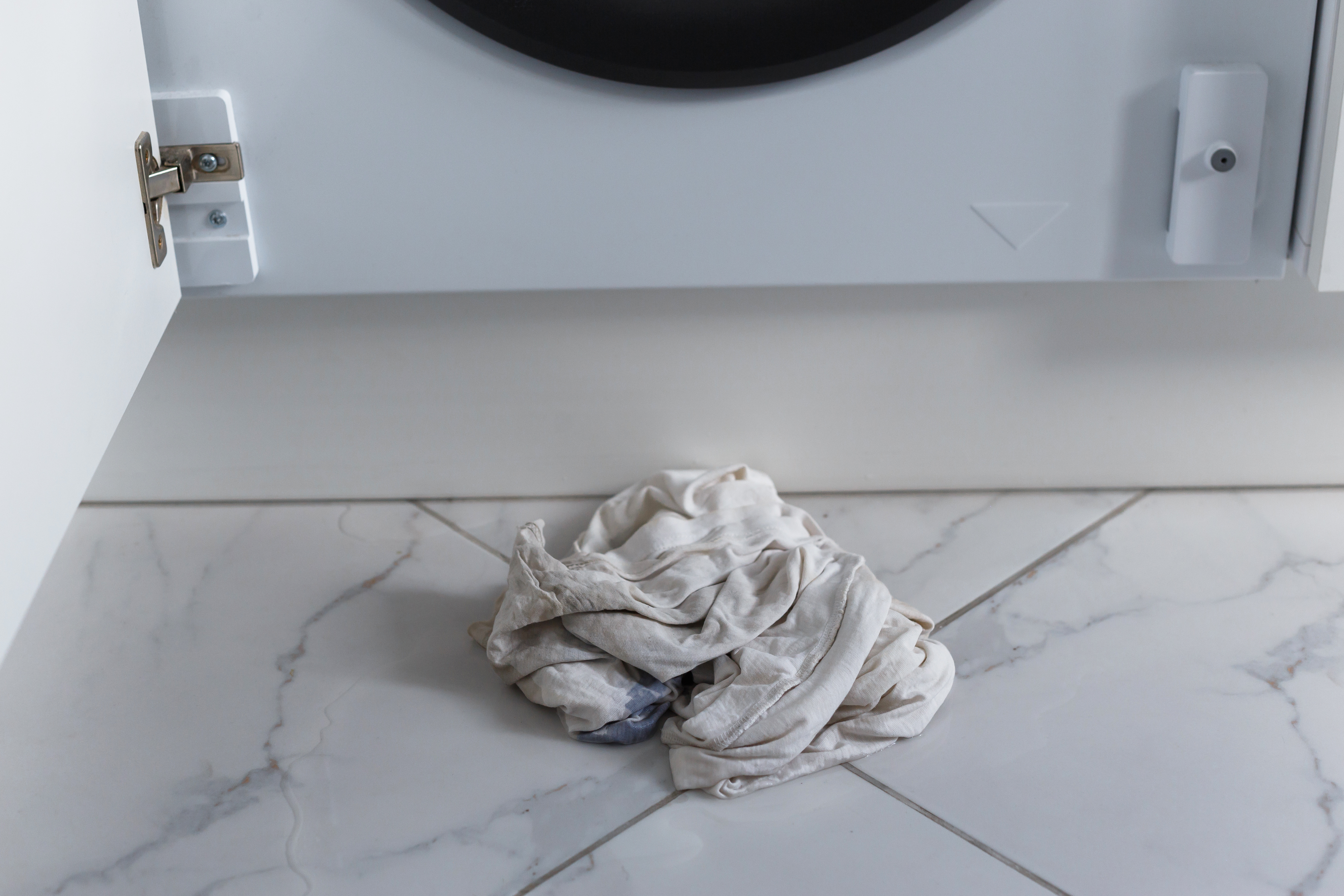
It is crucial to prevent washing machines from overflowing, so you do not end up with costly damage to your property. Here are some tips you can follow to keep your home safe:
- Have your washing machine properly installed and maintained: Your washing machine should be installed properly by following the manufacturer’s instructions. Make sure to check and tighten hoses and connections to prevent leaks.
- Leave at least four inches of space so that the supply and drain hoses do not become kinked.
- Use high-quality hoses: Always make sure that you replace any hoses that are old or worn out with stainless steel braided hoses. They last longer and are less likely to have leaks.
- Replace hoses every five years, even if the hoses do not seem damaged, they may break or loosen. Sometimes they will break from the inside, and you may not even notice it until it is too late.
- Shut off the water supply when not in use: If you are not using your washing machine, make sure that the valves are shut off, so you don’t end up with leaks or bursts.
- Never overload the machine: Always make sure to look at the manufacturer’s guidelines for load capacity for your specific washing machine. If the machine is overloaded, you may end up with a risk of leaks as it will vibrate excessively and can loosen connections and hoses.
- Do a thorough inspectionInspection is the careful examination and assessment of a pr... More and cleaning of the drainpipe: Make sure to regularly check the drainpipe for clogs or blockages. Then, clean it out to prevent overflow or backups.
- Stay home during laundry cycles: Try not to run the washing machine when you are not home. This allows you to react quickly in case there is an issue such as an overflow.
- Use a drip tray or a flood sensor: You can protect your home from water damage by using a drip tray under the washing machine or installing a flood sensor nearby. These devices will help you prevent water damage in your home.
- Do regular inspections of the washing machine area: Always make sure to inspect the area around the washing machine so you can catch any wet spots, moldMold is a type of fungus that grows in damp or humid conditi... More, or musty odors and prevent further damage.
- Clean the lint trap: The lint trap should be cleaned regularly so that blockages can be prevented.
- Look into a water leak detection system: It is always best to install a water leak detection system which can alert you in case there is an issue with a water leak in your home. This is an early warning system that can help you avoid damage in your home.
- Use the right amount of detergent that your washing machine is meant to use. This will help you avoid bubbles and suds that can cause an overflow. Always read the instructions to know which type of detergent is the best for your type of machine and how much to use for each wash.
Call the Professionals for Water Damage

If you’ve experienced water damage at your home or business, the professionals of RestorationMaster can help. Our flood cleanup specialists will arrive quickly and begin the restorationRestoration is the process of returning a property to its pr... More process. Our highly trained technicians will make sure to clean, dry and restore your property back to its original state.










